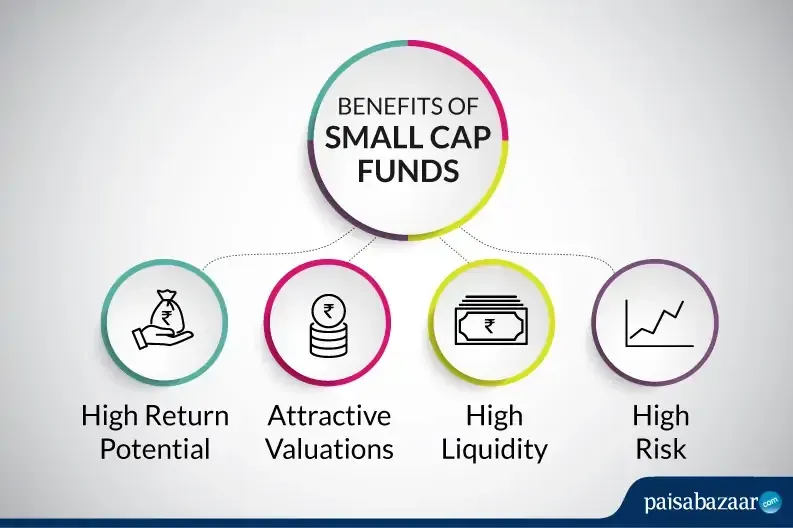Small cap mutual funds have recently garnered attention in the financial world, particularly following the latest stress test results. These funds, which predominantly invest in smaller companies, often exhibit distinctive characteristics in terms of liquidity and performance. The recent liquidity analysis reveals that some small cap mutual fund schemes could take as long as 70 days to liquidate 50 percent of their portfolio, raising important considerations for investors. As these mutual funds face various stress scenarios, the results provide insight into potential risks and the overall health of the portfolios. Understanding small cap fund performance, especially in volatile markets, is essential for making informed investment decisions.
Small cap investment vehicles, often referred to as small capitalization mutual funds, emphasize growth potential while carrying higher risk profiles. The performance of these funds, as indicated by recent market analyses, suggests varying degrees of liquidity, particularly under stress tests designed to assess their resilience. Investors should be aware of the diverse dynamics at play within mid and small cap funds, as they navigate the complexities of market fluctuations. In this context, liquidity evaluations become critical, shedding light on how swiftly funds can respond to market pressures. Overall, a comprehensive understanding of small cap strategies is vital for anyone interested in exploring the opportunities in smaller market segments.
Understanding Stress Tests in Mutual Funds
Stress tests in mutual funds are crucial assessments that gauge the potential liquidity constraints funds may face during adverse economic conditions. These tests require fund houses to simulate scenarios that impact the liquidity of their portfolios for mid-cap and small-cap funds. As mandated by SEBI guidelines, mutual funds must analyze how quickly they can liquidate portions of their holdings—specifically, they often focus on the timelines required to sell off 25% and 50% of the portfolio under stress. This ensures transparency and informs investors about the underlying risks associated with investing in these funds.
For instance, the latest stress test results highlighted that the quant Small Cap Fund would take up to 70 days to liquidate half of its portfolio, indicating a high level of risk associated with this fund. Such information is vital for investors who aim to understand the liquidity risks before making investment decisions. By disclosing these findings, mutual funds contribute to the overall transparency of the financial market, allowing investors to better manage their expectations and financial goals.
Liquidity Analysis of Small Cap Mutual Funds
The liquidity analysis for small cap mutual funds reveals significant variances across different schemes. For instance, the Axis Small Cap Fund has a liquidity timeline of 26 days for liquidating 50% of its portfolio, compared to the sometimes lengthy processes described in other funds. These differences in liquidity can be influenced by various factors, including the concentration of assets in less liquid securities and overall market conditions. Investors looking into small cap funds must carefully consider these timelines as they reflect the fund’s capacity to meet redemption requests efficiently.
Effective liquidity management is essential not only for fulfilling withdrawal requests but also for maintaining the fund’s integrity during turbulent markets. This is why small cap mutual funds are required to maintain a portion of their assets in cash, as seen with several funds holding between 12-14% in cash reserves. This strategic planning ensures that they can respond quickly to market demands, making liquidity analysis a fundamental component of understanding small cap fund performance.
Performance Metrics of Small Cap Funds
When evaluating small cap fund performance, it is important to consider various metrics beyond just returns. The stress test results provide insight into how well each fund might perform during market downturns or unexpected events. For example, the SBI Small Cap Fund requires 54 days to liquidate 50% of its portfolio, signaling a potential slowdown during adverse conditions. This information can impact investor confidence and decision-making as it relates to the long-term performance and reliability of the fund.
Investors should also analyze the volatility and concentration risk associated with these funds. A fund with high volatility and low liquidity can be a recipe for significant losses during stressful market periods. Hence, understanding these performance metrics helps investors better align their portfolios with their risk tolerance and investment horizon.
Key Features of Mid Cap and Small Cap Funds
Mid cap and small cap funds are distinguished by their fund size and the types of companies they invest in. Mid cap funds typically invest in companies that are larger than small cap firms but smaller than large cap ones, often seen as growth-oriented. Meanwhile, small cap funds target smaller companies which can offer substantial growth potential but also come with heightened risk and volatility. These differences are critical for investors to consider when choosing the right investment direction based on their risk appetite.
Moreover, considering the liquidity aspects of mid cap and small cap funds is essential. While small cap funds might promise higher returns, they also run the risk of longer liquidation times, as shown in the stress test results. For instance, while the performance and growth potential of small cap funds appeal to many investors, their liquidity needs during market fluctuations require careful evaluation to prevent adverse financial outcomes.
How Cash Allocation Impacts Fund Liquidity
The allocation of cash within small cap mutual funds plays a pivotal role in maintaining liquidity and financial stability. Funds maintaining a higher cash percentage can efficiently manage redemption requests during market stress events. For instance, the ICICI Prudential Smallcap Fund holds approximately 13.31% of its assets in cash, allowing for quicker responses when investors seek to sell their units.
This cash reserve acts as a cushion, especially during volatile market conditions, but it can also limit the fund’s ability to invest in growth opportunities. As a result, investors need to consider how a fund’s cash position aligns with their own investment strategy, balancing the need for liquidity against potential growth.
Investor Strategies in Small Cap Mutual Funds
For investors considering small cap mutual funds, it is essential to develop a clear investment strategy. This includes assessing risk tolerance, time horizon, and the investor’s capacity to endure periods of potential illiquidity. Understanding stress test metrics can significantly aid in making informed decisions about which small cap funds might align with their investment goals. Investors should also monitor liquidity provisions within each fund, ensuring they are comfortable with the timelines required for redemption.
Adopting a diversified approach, where small cap investments are mixed with large and mid-cap securities, can provide a balanced risk profile. This umbilical connection helps to mitigate the high volatility often seen with smaller firms while still allowing investors to tap into the growth potential these funds may offer.
Trends in Small Cap Fund Investments
The landscape of small cap fund investments is constantly evolving, with trends influenced by broader economic conditions and investor sentiment. Recent stress test results have prompted cautious optimism among investors who observe trends in liquidity and asset performance. The increasing focus on small cap funds suggests that investors are seeking enhanced returns in a low-interest-rate environment, but they must remain vigilant about the associated risks.
Given the performance indicators and stress test outcomes, investors should watch emerging trends that could shape their bench strategies. Regularly reviewing fund disclosures and stress test analyses will empower investors to adjust their portfolios effectively as market conditions change. Staying informed about these dynamics is crucial for fostering effective decision-making in small cap mutual fund investments.
Role of Regulatory Guidelines in Fund Transparency
Regulatory bodies such as SEBI play an essential role in enforcing transparency in the mutual fund industry. Through strict guidelines, these organizations mandate that fund houses conduct stress tests and disclose results, which are critical for fostering an informed investor community. Such measures ensure that fund disclosures comprehensively cover aspects like portfolio liquidity under stress scenarios for small cap and mid cap funds, making it easier for investors to evaluate the risks involved.
The importance of regulatory oversight can’t be overstated, as it establishes standards for disclosure that promote accountability among fund managers. By adhering to these guidelines, mutual funds can maintain higher degrees of credibility with their investors, ultimately enhancing market stability and investor trust.
Analyzing Valuation Metrics of Small Cap Funds
Valuation metrics serve as a critical tool in assessing small cap funds’ performance and investment potential. Investors must keep a keen eye on these metrics when evaluating funds to understand how investment decisions are made in the context of stress tests. For instance, lower valuation ratios may indicate potential undervaluation, attracting investors seeking to capitalize on growth potential while remaining aware of liquidity risks.
In a landscape where growth is often accompanied by volatility, understanding how various valuation metrics interact with risk assessments from stress tests will enhance investors’ analytical approaches. This insightful analysis can lead to more robust investment choices aligned with an investor’s overall strategy and financial goals.
Frequently Asked Questions
What is the importance of stress tests for small cap mutual funds?
Stress tests for small cap mutual funds assess the liquidity of a fund’s portfolio under challenging market scenarios. These tests are crucial as they help investors understand how long it would take to liquidate a significant portion of the fund, typically 25% or 50%, during market stress. This information aids in evaluating the fund’s resilience and risk management strategies.
How does liquidity analysis impact small cap fund performance?
Liquidity analysis directly impacts small cap fund performance by providing insights into how quickly a fund can convert its holdings into cash without affecting the market price. Understanding liquidity is vital for investors, as it can influence the fund’s ability to meet redemption requests and overall stability during volatile market conditions.
What are the recent stress test results for popular small cap mutual funds?
The latest stress test results reveal that the quant Small Cap Fund requires the longest time at 70 days to liquidate 50% of its portfolio, while the Axis Small Cap Fund takes the least time at 26 days. These results highlight significant differences in liquidity across small cap mutual funds, which is an important consideration for investors.
What factors contribute to small cap mutual fund liquidity under stress scenarios?
Several factors contribute to small cap mutual fund liquidity under stress scenarios, including the portfolio’s concentration in specific securities, the fund’s cash allocation to meet redemption requests, and the overall volatility of the assets held in the fund. Fund houses are required to disclose these metrics during stress tests to provide transparency to investors.
Are mid cap and small cap funds subjected to the same stress tests?
Yes, both mid cap and small cap funds are subject to the same stress tests as per SEBI guidelines. The stress tests evaluate the liquidity of their portfolios under various market scenarios and help investors assess the risks associated with these investment vehicles.
How does cash allocation affect stress test outcomes for small cap funds?
Cash allocation can significantly affect stress test outcomes for small cap funds. A higher percentage of assets allocated to cash can improve a fund’s ability to meet redemption requests swiftly, thereby enhancing its liquidity position during stress scenarios. For instance, the ICICI Prudential Smallcap Fund has a cash allocation of 13.31%, which aids in managing liquidity effectively.
What should investors consider when evaluating small cap fund performance during stress tests?
Investors should consider the time required to liquidate portions of the portfolio, the fund’s cash allocation, and overall market conditions when evaluating small cap fund performance during stress tests. Understanding these factors helps investors gauge how well the fund can handle market downturns and fulfill redemption obligations.
How can understanding stress test results influence my decisions on small cap mutual funds?
Understanding stress test results can directly influence your decisions on small cap mutual funds by providing insights into their liquidity and risk exposure. If a fund shows longer liquidation times, it may suggest higher risk, allowing investors to weigh this against their risk tolerance and investment goals.
| Fund Name | Stress test (50% of portfolio) | Stress test (25% of portfolio) |
|---|---|---|
| TATA Small Cap Fund | 40 days | 20 days |
| SBI Small Cap Fund | 54 days | 27 days |
| quant Small Cap Fund | 70 days | 35 days |
| Nippon India Small Cap Fund | 30 days | 15 days |
| Kotak Small Cap Fund | 34 days | 17 days |
| ICICI Prudential Smallcap Fund | 14 days | 7 days |
| HDFC Small Cap Fund | 47 days | 23 days |
| DSP Small Cap Fund | 46 days | 23 days |
| Axis Small Cap Fund | 26 days | 13 days |
Summary
Small cap mutual funds face varying degrees of liquidity challenges, as highlighted by the latest stress tests. These tests reveal the time required to liquidate portions of their portfolios under stressful market conditions. Some funds, such as the quant Small Cap Fund, could take up to 70 days to liquidate 50% of their assets, indicating potential risks for investors. On the other hand, funds like the Axis Small Cap Fund display quicker liquidation times, suggesting better liquidity management. Investors should pay close attention to these metrics when considering investments in small cap mutual funds for effective portfolio management.




